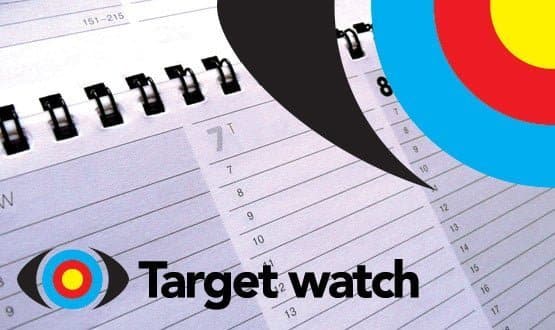Hits and misses
- 22 August 2014

The Department of Health has two seasons. There may be a heatwave on London’s streets or snow on the ground.
But in Whitehall it will always be spring or autumn. Initiatives will be promised for one season and quietly put off to the other. Take, for example, the IT strategy that EHI was expecting when it published the first of its ‘target watch’ features a year ago.
The strategy, which was supposed to flesh out NHS England’s guidance on applying to the first of the tech funds and creating an ‘integrated digital care record’, was due in December.
This became “spring.” Meantime, the Health and Social Care Information Centre said that it would be putting out its own technology strategy, which was news to Leeds.
The National Information Board got involved. Now a joint NHS England / HSCIC strategy is promised for “the autumn.” Although, as the nights start to draw in, which bit of autumn has not been specified.
NHS Connecting for Health is really doing quite well…
The non-appearance of the strategy is an obvious “miss.” Otherwise, some important NHS IT business has been concluded over the past year, and some core infrastructure quietly renewed.
But some high profile initiatives have faded, amid the care.data debacle, change at the top of NHS England, and the early start of the general election campaign.
So, the DH has concluded some outstanding National Programme for IT business, with the finalisation of its deal with CSC for the North, Midlands and East, and the conclusion of its legal case with Fujitsu over its exit from the South (it lost, and will have to pay the company £700m).
On the infrastructure front, a new Spine service is due to go live this weekend that is built on open source technologies, should be easier to access and expand – and will hopefully still deliver access to the personal demographics service, SUS and other services on Monday.
The HSCIC is also saying that Choose and Book will morph into the new e-Referrals service ahead of schedule; in November, rather than next March. Whether it will also deliver 100% electronic booking remains to be seen (C&B was supposed to achieve this in 2005).
Paperless; undefined, but funded
The big target for NHS IT remains health secretary Jeremy Hunt’s challenge to go ‘paperless’ by 2018, although he has never clarified what ‘paperless’ means – which is one reason that an IT strategy might be useful.
Over the past year, the government has found money to promote its vision in the form of not one, but two technology funds.
Bidding for the first ‘Safer Hospitals, Safer Wards: Technology Fund’ was run on an incredibly tight timescale, but eventually delivered between £19,000 and £8.2m to 131 trusts.
Unfortunately, some £60m of the £240m pot was lost under Treasury capital rules, because trusts were unable to spend it in time. NHS England is reportedly trying to recover this.
Wish it luck; not least because George Osborne and his friends are still sitting on the second round of the Nursing Technology Fund, which was slated for launch in June.
As EHI reported last week, some 226 bids worth £360m have been made to tech fund 2, or the ‘Integrated Digital Care Fund’, with more bids for for information sharing projects than single organisation projects.
This suggests that trusts now have their hands full with tech fund 1 work, but feel the need to respond to the return of the integrated care agenda. Contrariwise, an increasing number of trusts are announcing big, single supplier contracts, arguing that ‘best of breed’ has got them as far as they will go.
One of the dangers of this is that trusts will remain “islands of good IT in a sea of non-connectivity” (as a former director general of NHS IT once put it) – which is another reason that an IT strategy might be useful.
A really good one might explain how the NHS of the future will be organised, what IT is needed to make sure that information flows around it, and how that will be achieved. Failing that, some clear guidance on standards would be a start.
The NHS Number, again
NHS England has been pushing the ‘interoperability jigsaw’ through the tech funds, which includes a renewed focus on the NHS Number.
It has also been surveying trusts to find out how many are meeting their new contractual requirement to use this as the primary identifier on clinical correspondence. EHI Intelligence figures suggest around 20% of trusts still fail to do this, so there’s clearly some way to go.
The NHS Number has been around since 1996 and was “mandated” by the NHS Patient Safety Agency a decade later. But, as EHI said last year, ten years of not hitting a target is no reason to give up on it (databases and patients in A&E without one may, of course, be another matter).
The new front door becomes a lick of paint
Patients were promised many new services by the present government and, in particular, by NHS England’s director of patients and information, Tim Kelsey. Some of these have failed to hit their launch targets, while others have got that far, but still faded without much trace.
Projects in the first category include Code4Health, the controversial programme to get 50,000 clinicians coding, that was announced in October 2012. EHI understands that this is now the responsibility of its head of business systems, Richard Jefferson; but little has been heard of it recently.
Projects in the second include the new “front door” to the NHS that was dubbed “the daughter of NHS Choices.” The Integrated Customer Service Platform has gone on to become a revamp of NHS Choices – one that, so far, seems to have offered patients two new services; a GP choice app and an urgent care finder.
While more is promised, it emerged this week that NHS England’s medical director, Sir Bruce Keogh, is pushing ahead with plans to expand NHS 111 service as part of his overhaul of urgent and emergency care services.
He is also promising a “single point of contact” with health and care professionals, who will have access to “relevant” medical records, to boot. Perhaps the two teams could talk to each other?
Feedback; but it might be quicker to contact the CQC
Given Sir Bruce’s interest in hospital inspection and outcomes reporting, they could also talk about CareConnect, the initiative to enable patients to go online, ring, text or use social media to report issues and provide feedback that is loosely based on the US 311 service.
This exists, as a page on NHS Choices; but so far only 18 trusts have signed up, the map that’s supposed to let people see problems with and reviews about them isn’t working, and there’s no sign of a link with, say, the CQC’s new and Keogh-inspired inspection regime.
CareConnect does provide links to Friends and Family Test data and feedback submitted via the NHS Choices and Patient Opinion services. So that’s the target to have ‘live’ feedback in place by March 2015 hit (although, to be picky, services like Patient Opinion did already exist).
Records access doubles!
Another target that will almost certainly be missed is patient access to records. The scope of the target has been steadily scaled back by the government, from access to all records, to access to GP records, to access to a “subset” of the GP record – namely the information in the Summary Care Record – by 2015.
Even so, the HSCIC’s indicator portal says that just 230 out of 7,974 practices both had and had switched on the functionality for records access at the end of the fourth quarter of 2013-14. That’s just 2.9%. Although that is double what it was last year.
And telehealth is in deep trouble. The 3millionlives campaign to have 3m patients using telehealth by 2017 has a couple of years to run.
But the programme that has since been renamed the ‘technology enabled care services plan’ was supposed to issue a new delivery plan in May, and since then there has been radio silence (perhaps because the detailed reports of the Whole System Demonstrator projects keep showing they didn’t work).
Care.data; and the big targets of 2014-15
A lot of the momentum behind the patient IT agenda has undoubtedly been swallowed up by the care.data debacle.
When EHI wrote its first ‘target watch’, it looked as if the difficult part of this programme to expand the Hospital Episode Statistics and to link them to other data sets would be expanding the HES.
But the little problem of hospitals not being able to collect the proposed dataset has been subsumed in the huge row that broke out over the collection of GP data. And over NHS England’s decision to proceed with the programme on the back of a leaflet that didn’t name it or explain how to opt-out.
NHS England is now looking for a director of intelligence to take it on; but it would be a brave civil servant that decided to push ahead in the run-up to a general election, and an even braver politician that decided to back it.
Care.data looks dead until next year. But the NHS has bigger problems to worry about. The really, really big target that it needs to hit is the ‘Nicholson Challenge’ to saved £20 billion by the end of 2014-15, to bridge the gap between flat funding and rising demand.
All the signs are that this will be missed, and that a cash crisis is on the way. The new chief executive of the NHS, Simon Stevens, is promising a new plan (almost inevitably, this “autumn”) while politicians are turning to integrated health and social care as “the solution.”
While it has always been argued that IT must contribute to both the savings and integration agendas, its precise contribution has never been articulated. Now would be a really good moment for that to happen. Perhaps in that IT strategy…




